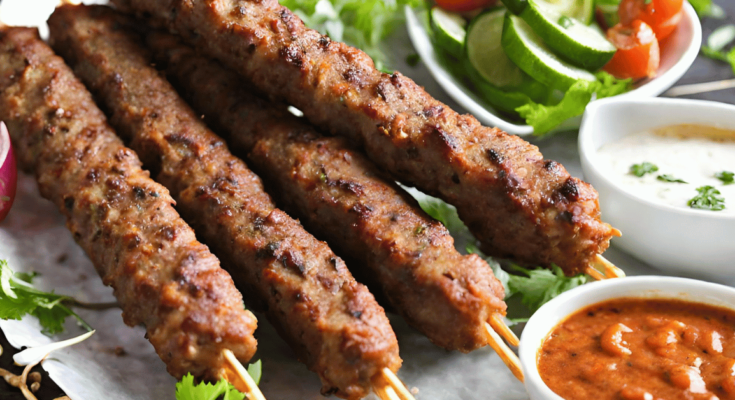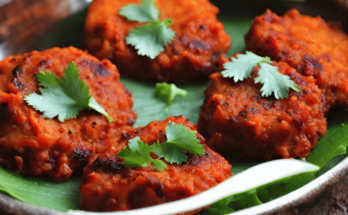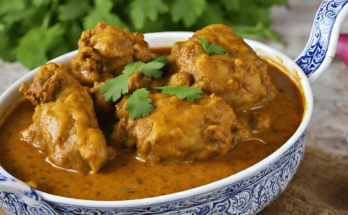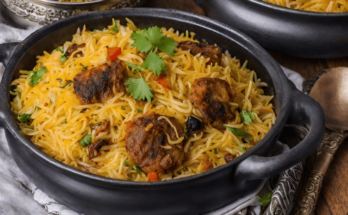Seekh kebab, a tantalizing treat originating from the Indian subcontinent, has captivated food enthusiasts worldwide with its rich flavors and aromatic spices. In this comprehensive guide, we delve into the intricacies of preparing this delectable dish, exploring its history, ingredients, preparation methods, cooking techniques, serving suggestions, and more. Whether you’re a seasoned chef or an amateur cook, mastering the art of seekh kebab will elevate your culinary repertoire and delight your taste buds.
A Brief History of Seekh Kebab
Seekh kebab traces its roots back to the medieval kitchens of the Mughal Empire, where skilled chefs crafted elaborate feasts fit for emperors. The word “seekh” translates to “skewer,” referring to the traditional method of molding the seasoned meat mixture onto metal skewers before cooking over an open flame. Over the centuries, seekh kebab evolved from a royal delicacy to a beloved street food enjoyed by people of all walks of life.
Ingredients for Seekh Kebab Recipe
Main Ingredients
- Minced Meat: The foundation of seekh kebab, typically made from finely minced lamb, beef, or chicken.
- Spices and Herbs: A blend of aromatic spices such as cumin, coriander, garam masala, and fresh herbs like cilantro and mint.
- Binding Agent: Commonly used ingredients include beaten egg, bread crumbs, or gram flour (besan) to bind the meat mixture and enhance its texture.
Optional Ingredients
- Vegetables: Finely chopped onions, bell peppers, and green chilies can be added to the meat mixture for added flavor and moisture.
- Additional Flavorings: Experiment with ingredients like garlic paste, ginger paste, and yogurt to customize the taste according to your preferences.
Preparation of Kebab’s
- Preparing the Minced Meat: Begin by ensuring that the minced meat is fresh and free from excess moisture. Pat it dry with paper towels if necessary, as excess moisture can affect the texture of the kebabs.
- Mixing Spices and Herbs: In a large mixing bowl, combine the minced meat with an array of spices and fresh herbs. The key to a flavorful seekh kebab lies in the harmonious balance of spices, so don’t hesitate to adjust the seasoning according to your taste.
- Adding the Binding Agent: To bind the meat mixture together, incorporate the chosen binding agent gradually until you achieve a smooth and pliable consistency. Be mindful not to overwork the mixture, as this can result in tough kebabs.
- Optional Steps for Enhanced Flavor: For an extra burst of flavor, consider marinating the meat mixture for a few hours or overnight in the refrigerator. This allows the spices and herbs to infuse the meat thoroughly, resulting in a more nuanced taste.
Shaping the Kebabs
Traditional Methods
- Skewers: Thread the meat mixture onto metal skewers, pressing it firmly to form elongated kebabs.
- Hand-shaping: Alternatively, shape the meat mixture into cylindrical or oval patties by hand, mimicking the appearance of traditional seekh kebabs.
Modern Alternatives
- For convenience, you can use pre-made seekh kebab molds or shaping tools to achieve uniformity in size and shape. These tools are especially handy for novice cooks or those pressed for time.
Cooking Methods
- Grilling: Grilling is the preferred method for cooking seekh kebabs, as it imparts a smoky flavor and caramelized exterior. Preheat the grill to medium-high heat and cook the kebabs for 10-12 minutes, turning occasionally until evenly browned and cooked through.
- Oven-baking: To bake seekh kebabs in the oven, preheat the oven to 375°F (190°C) and arrange the kebabs on a greased baking sheet. Bake for 20-25 minutes, flipping halfway through, until golden brown and cooked to perfection.
- Pan-frying: Pan-frying is a quick and convenient alternative for cooking seekh kebabs indoors. Heat a skillet or frying pan over medium heat, add a drizzle of oil, and cook the kebabs for 8-10 minutes, turning occasionally, until golden brown and cooked through.
Serving Suggestions
Accompaniments
- Dips and Sauces: Serve seekh kebabs with a selection of dipping sauces such as mint chutney, tamarind sauce, or yogurt raita for a burst of contrasting flavors.
- Salad: Pair the kebabs with a crisp salad tossed in a tangy vinaigrette to add freshness and balance to the meal.
Presentation Tips
- Arrange the seekh kebabs on a platter garnished with fresh herbs and lemon wedges for an eye-catching presentation that’s sure to impress your guests. For a rustic touch, serve the kebabs alongside warm flatbreads or fluffy rice pilaf.
Variations for Kebab
Regional Variations
- Explore regional variations of seekh kebabs such as Lucknowi seekh kebab, Hyderabad seekh kebab, or Kashmiri seekh kebab, each boasting unique flavor profiles and cooking techniques.
Vegetarian Options
- For vegetarians and vegans, consider preparing seekh kebabs using plant-based alternatives such as paneer (Indian cottage cheese), tofu, or mixed vegetables seasoned with spices and herbs.
Fusion Kebabs
- Get creative with fusion seekh kebabs by incorporating international flavors and ingredients, such as Thai-inspired lemongrass and coconut seekh kebabs or Mexican-inspired chipotle and black bean seekh kebabs.
READ MORE: https://recipereverie.com/gluten-free-pizza/
Health Benefits
- Protein Source: Seekh kebabs are a rich source of protein, making them a satisfying and nourishing option for meat lovers and fitness enthusiasts alike.
- Nutritional Value: In addition to protein, seekh kebabs provide essential nutrients such as iron, zinc, and B vitamins, contributing to overall health and well-being when consumed as part of a balanced diet.
Potential Concerns
Be mindful of portion sizes and cooking methods to avoid excessive intake of saturated fats and calories. Opt for lean cuts of meat and incorporate plenty of vegetables into your meal for added nutrition and fiber.
Tips and Tricks
- Marination Techniques: For maximum flavor infusion, marinate the meat mixture for at least 1-2 hours, or preferably overnight, in the refrigerator. This allows the flavors to meld together and tenderize the meat for a more succulent texture.
- Cooking Time and Temperature: Adjust the cooking time and temperature according to the thickness of the kebabs and your preferred level of doneness. Avoid overcooking, as this can result in dry and tough kebabs.
- Storage and Reheating: Store leftover seekh kebabs in an airtight container in the refrigerator for up to 3-4 days, or freeze them for longer-term storage. To reheat, gently warm the kebabs in a preheated oven or microwave until heated through.
Cultural Significance
- Festivals and Celebrations: Seekh kebabs are often served during festive occasions such as Eid celebrations, weddings, and family gatherings, symbolizing abundance and hospitality.
- Social Gatherings: Whether enjoyed at home or savored at street-side stalls, kebabs bring people together, fostering a sense of camaraderie and conviviality among friends and family.
- Street Food Culture: In bustling markets and bustling cities across South Asia, the aroma of sizzling seekh kebabs wafting from roadside vendors tantalizes passersby, offering a glimpse into the vibrant street food culture of the region.
Conclusion
In conclusion, seekh kebab stands as a testament to the rich culinary heritage of the Indian subcontinent, captivating palates with its bold flavors and timeless appeal. By following the guidelines outlined in this article, you can embark on a culinary journey to master the art of kebab preparation and impress your loved ones with this irresistible delicacy. Bon appétit!
Frequently Asked Questions (FAQs)
1. What is seekh kebab?
- Seekh kebab is a type of grilled meat skewer originating from the Indian subcontinent, traditionally made with minced meat mixed with spices and herbs, then shaped onto skewers and cooked over an open flame.
2. What type of meat is typically used in seekh kebab?
- Lamb, beef, or chicken are the most commonly used meats for seekh kebab. However, variations using seafood or vegetarian ingredients are also popular.
3. Can I make seekh kebab without a grill?
- Yes, seekh kebab can be cooked using alternative methods such as baking in the oven or pan-frying on the stovetop. Each method offers a slightly different flavor and texture to the kebabs.
4. How do I prevent seekh kebab from sticking to the grill?
- To prevent sticking, ensure that the grill grates are clean and well-oiled before cooking. Additionally, you can brush the kebabs with a bit of oil before placing them on the grill.
5. Are seekh kebabs spicy?
- The level of spiciness in kebabs can vary depending on the recipe and personal preference. While some recipes use a blend of mild spices, others may incorporate hotter chili peppers for a more fiery kick.
6. Can I make kebab in advance?
- Yes, kebab can be prepared in advance and stored in the refrigerator or freezer until ready to cook. Marinating the meat mixture in advance can also enhance the flavor.
7. How do I serve kebab?
- Seekh kebab is typically served hot off the grill, accompanied by fresh salads, flatbreads, and a variety of dipping sauces such as mint chutney or yogurt raita.
8. Are kebabs healthy?
- kebabs can be a nutritious option as they are rich in protein and essential nutrients. However, the overall healthiness of the dish depends on factors such as the type of meat used and the cooking method employed.
9. Can I make kebab without meat?
- Yes, vegetarian versions of kebab can be made using ingredients like paneer (Indian cottage cheese), tofu, or mixed vegetables seasoned with spices and herbs.
10. Are kebabs gluten-free?
- kebabs can be made gluten-free by using alternative binding agents such as chickpea flour (besan) or cornstarch instead of bread crumbs. However, it’s important to check the ingredients used in the recipe to ensure they are gluten-free.





One Comment on “Homemade Seekh Kebab Recipe for Food Lovers”